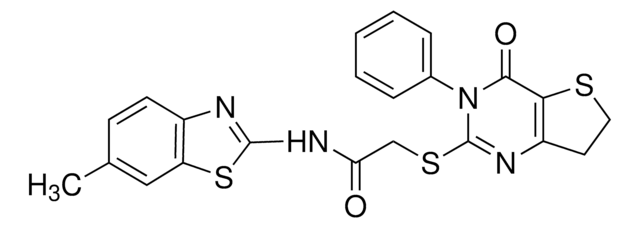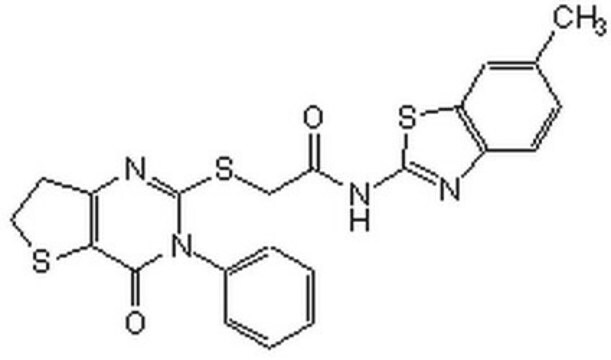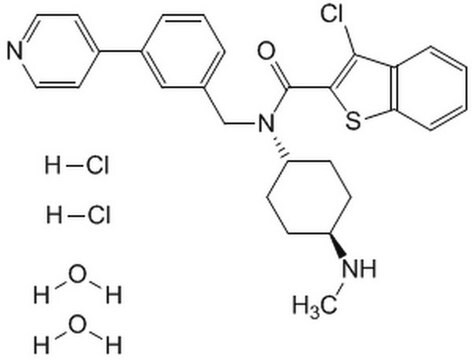361559
GSK-3 Inhibitor XVI
GSK-3 Inhibitor XVI - CAS 252917-06-9, is a cell-permeable, potent, ATP-competitive, and highly selective GSK-3 inhibitor (IC₅₀ = 10 and 6.7 nM against GSK-3α and GSK-3β, respectively).
Synonym(s):
GSK-3 Inhibitor XVI, 6-(2-(4-(2,4-Dichlorophenyl)-5-(4-methyl-1H-imidazol-2-yl)-pyrimidin-2-ylamino)ethyl-amino)-nicotinonitrile, CHIR99021
About This Item
Recommended Products
Quality Level
assay
≥97% (HPLC)
form
solid
manufacturer/tradename
Calbiochem®
storage condition
OK to freeze
protect from light
color
light beige
solubility
DMSO: 5 mg/mL
shipped in
ambient
storage temp.
2-8°C
SMILES string
Clc1c(ccc(c1)Cl)c2nc(ncc2c4[nH]cc(n4)C)NCCNc3ncc(cc3)C#N
InChI
1S/C22H18Cl2N8/c1-13-10-29-21(31-13)17-12-30-22(32-20(17)16-4-3-15(23)8-18(16)24)27-7-6-26-19-5-2-14(9-25)11-28-19/h2-5,8,10-12H,6-7H2,1H3,(H,26,28)(H,29,31)(H,27,30,32)
InChI key
AQGNHMOJWBZFQQ-UHFFFAOYSA-N
General description
Packaging
Warning
Reconstitution
Other Notes
Ring, D.B., et al. 2003. Diabetes52, 588.
Bennett, C.N., et al. 2002. J. Biol. Chem.277, 30998.
Cline, G.W., et al. 2002. Diabetes51, 2903.
Legal Information
signalword
Warning
hcodes
Hazard Classifications
Acute Tox. 4 Oral
Storage Class
11 - Combustible Solids
wgk_germany
WGK 3
flash_point_f
No data available
flash_point_c
No data available
Certificates of Analysis (COA)
Search for Certificates of Analysis (COA) by entering the products Lot/Batch Number. Lot and Batch Numbers can be found on a product’s label following the words ‘Lot’ or ‘Batch’.
Already Own This Product?
Find documentation for the products that you have recently purchased in the Document Library.
Customers Also Viewed
Our team of scientists has experience in all areas of research including Life Science, Material Science, Chemical Synthesis, Chromatography, Analytical and many others.
Contact Technical Service









